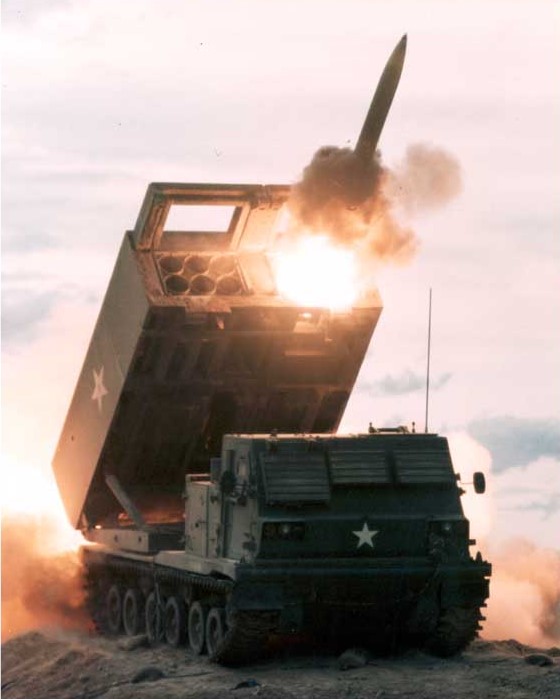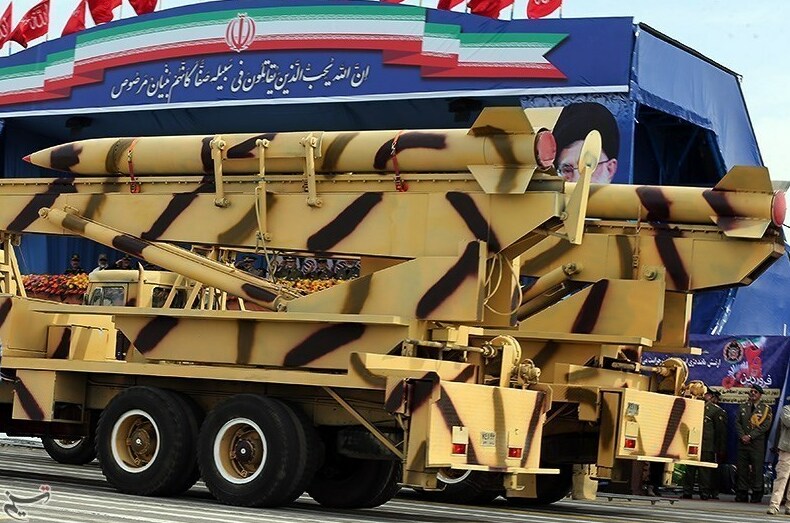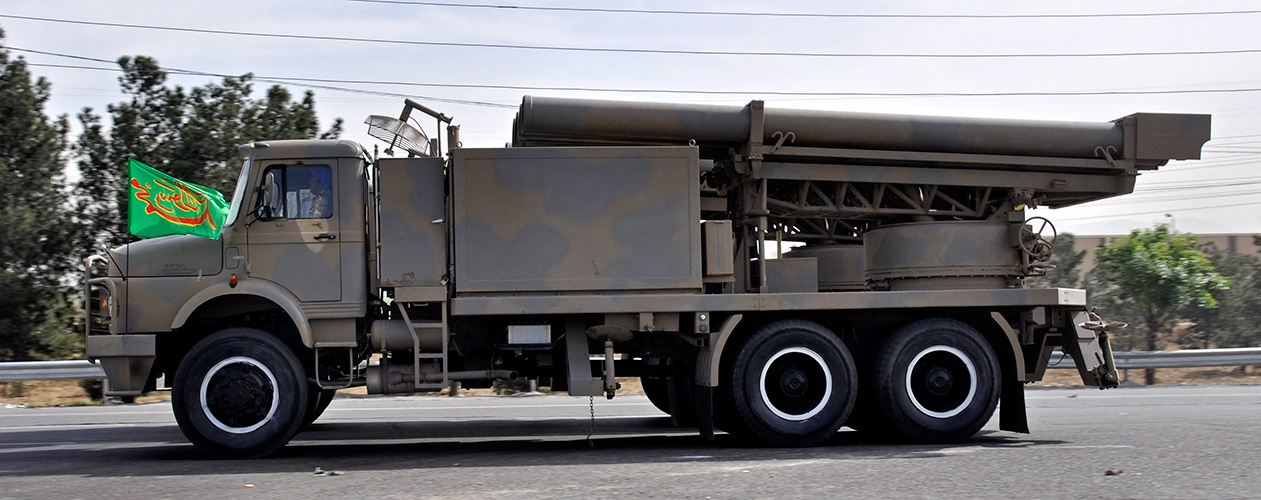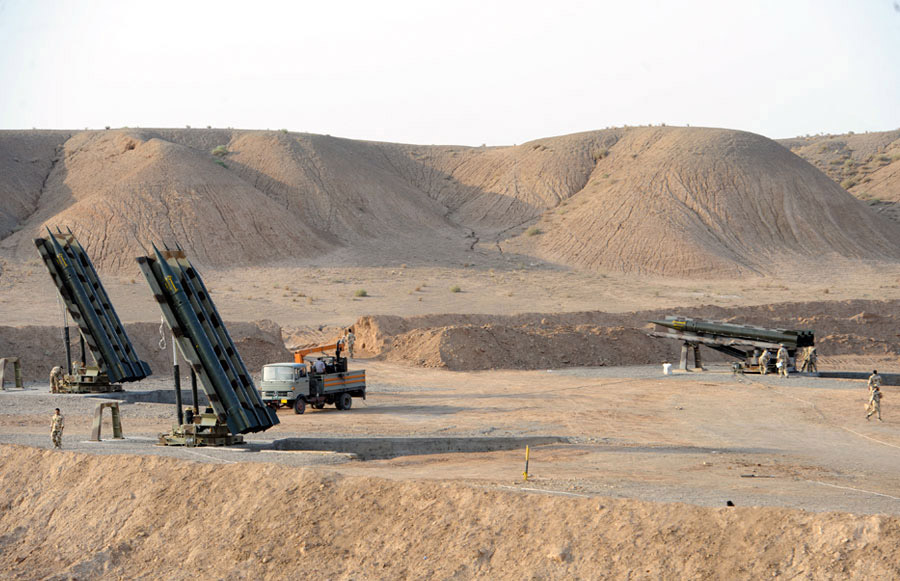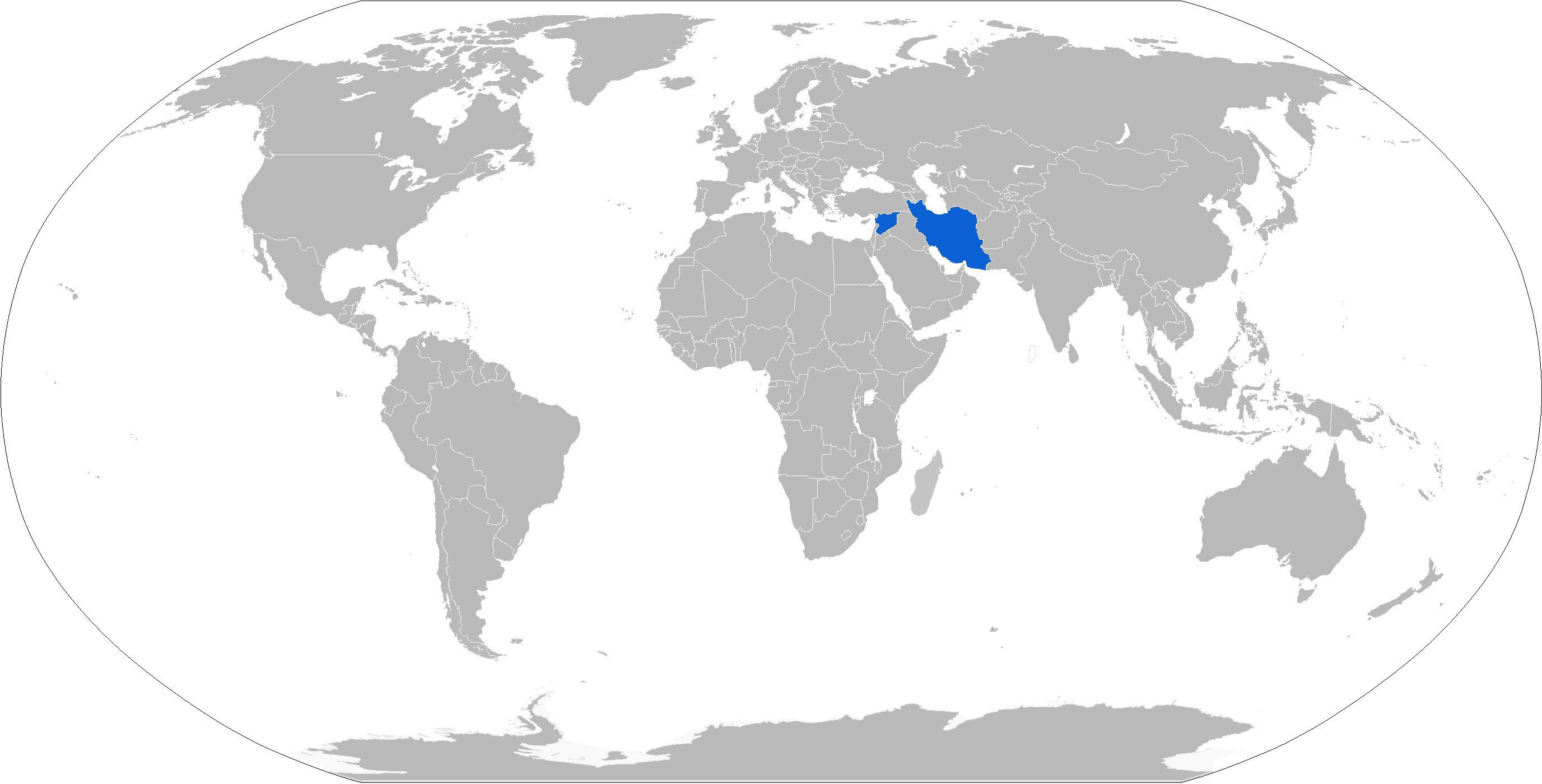|
Shahin (rocket)
The Shahin-1 and Shahin-2 are Iranian road-mobile truck mounted short-range fin-stabilized unguided 333 mm Artillery rockets. It was designed to be a cost-effective unguided rocket to destroy enemy troop concentrations, installations and fortifications at medium ranges. The rocket has been replaced in production by more capable artillery rockets however it is still in active uses. Characteristics In general both rockets are steel body unguided 333 mm 190 kg explosive fin stabilized rockets having seven nozzles with limited accuracy and assembling times of several minutes. They both are launched from unarmoured triple rail launchers. Shahin-1 It is an unguided 2.9 m long 384 kg 190 kg high explosive 333 mm rocket with a range of 13 km. The rocket had forest green colour with two green, one red and one white stripe, its nose is itself painted white and red. Shahin-2 It is an unguided 3.9 m long 530 kg 190 kg high explosiv ... [...More Info...] [...Related Items...] OR: [Wikipedia] [Google] [Baidu] |
Rocket Artillery
Rocket artillery is artillery that uses rocket explosives as the projectile. The use of rocket artillery dates back to medieval China where devices such as fire arrows were used (albeit mostly as a psychological weapon). Fire arrows were also used in multiple launch systems and transported via carts. First true rocket artillery was developed in India by the Kingdom of Mysore. In the late nineteenth century, due to improvements in the power and range of conventional artillery, the use of early military rockets declined; they were finally used on a small scale by both sides during the American Civil War. Modern rocket artillery was first employed during World War II, in the form of the German Nebelwerfer family of rocket ordnance designs, Soviet Katyusha-series and numerous other systems employed on a smaller scale by the Western allies and Japan. In modern use, the rockets are often guided by an internal guiding system or GPS in order to maintain accuracy. History Early history ... [...More Info...] [...Related Items...] OR: [Wikipedia] [Google] [Baidu] |
Naze'at
The Naze'at 6-H and Naze'at 10-H/Mushak-120/Iran-130 ( fa, نازعات) are two Iranian long-range artillery rockets with ranges of about 100 km. The Naze'at 10-H is larger, more powerful, and has a longer range than the Nazeat 6-H. Like Iran's similar shaped Zelzal rockets, Naze'at rockets do not have a guidance system. Both systems are also widely known without the -H suffix, as the Naze'at 6 and Naze'at 10. The Iranians also have developed another 500 kg version called the Mushak-160 with 160 km range. History The Naze'at family was developed during the 1980s with Chinese assistance in an attempt to build an equivalent of the FROG-7 missile. Specifications ; *Max. range (km): 100 *Min. range (km): 80 *Length (mm): 6290 *Diameter (mm): 356 *Initial weight (kg): 960 *Warhead weight (kg): 130 *C.E.P (%): <5% Max. range *Average Action Time (s): 9 *Specific Impulse (s): 240 *Propellant Weight (kg): 420 *Type of Propellant: Solid ( |
Jobaria Defense Systems Multiple Cradle Launcher
The Jobaria Defense Systems Multiple Cradle Launcher, also called Jahanam Launcher ( ar, الراجمة جهنم), is an Emirati made multiple rocket launcher unique to the United Arab Emirates Army. It has 240 tubes making it the world's largest rocket artillery by tube count. It is thought to function as a combined form of BM-21 Grad multiple rocket launcher. It is developed by a joint venture Al Jaber Land Systems. Design rationale The United Arab Emirates Army made a request for a rocket artillery battery to be mounted on one vehicle, since the army is using six vehicles, most likely BM-21 Grad, and 30 soldiers to do the same. Due to the small number of military personnel of the United Arab Emirates Army, the Multiple Cradle Launcher has an advantage over the use of six vehicles which require a team of 30 men, whereas the Multiple Cradle Launcher only needs a team of three to operate and launching the same number of rockets (240). It has four rocket launchers attached to th ... [...More Info...] [...Related Items...] OR: [Wikipedia] [Google] [Baidu] |
Tondar-69
The Tondar-69 is a short-range ballistic missile (SRBM) originating in China and operated by the armed forces of Iran. It was originally deployed by the Iranian army in 1992. The design is based on the Chinese CSS-8, which itself was designed from the Soviet S-75 surface-to-air missile (SAM). It is launched from static transporter erector launcher A transporter erector launcher (TEL) is a missile vehicle with an integrated tractor unit that can carry, elevate to firing position and launch one or more missiles. History Such vehicles exist for both surface-to-air missiles and surface-to-su ...s towed into position. Up to two hundred CSS-8 missiles were acquired from 1989-1992 and modified to Tondar-69 specifications. References External sources CSIS Missile Threat - Tondar-69 Surface-to-surface missiles of Iran Short-range ballistic missiles of Iran Theatre ballistic missiles Military equipment introduced in the 1990s {{Iran-mil-stub ... [...More Info...] [...Related Items...] OR: [Wikipedia] [Google] [Baidu] |
Arash (rocket)
The Arash ( fa, آرش, From Iranian Arash) is a series of 122mm unguided artillery rocket developed by Iran. It is a copy of BM-21 Grad The BM-21 "Grad" (russian: БМ-21 "Град", lit= hail) is a self-propelled 122 mm multiple rocket launcher designed in the Soviet Union. The system and the M-21OF rocket were first developed in the early 1960s, and saw their first com .... A guided version for the Iranian Defense Ministry was recently (July 2020) tested. Overview There are four models for export. Each having different specifications: Arash 1: Range : 21.5 km, Length : 2.815m, Velocity : 710 m/s Arash 2: Range : 30 km, Length : 2.815m, Velocity : 1050 m/s Arash 3: Range : 18 km, Length : 2.050m, Velocity : 720 m/s Also known as Noor. Arash 4: Range : 40 km, Length : 2.890m, Warhead Types :HE fragmentation, ball steel, mine and fuel air. The export pages say that Arash 4 has a different launching system than other variants. All of ... [...More Info...] [...Related Items...] OR: [Wikipedia] [Google] [Baidu] |
Fajr-5
The Fajr-5 (rarely Fadjr-5, fa, فجر-۵, "Dawn") is an Iranian 333 mm long-range multiple launch rocket system (MLRS). The Fajr-5 was developed during the 1990s and has since been exported to various armed actors in the Middle East. The Fajr-5 launcher fires four 6.48 meter long, 333 millimeter-calibre Fajr-5 artillery rockets, with a range of 75 kilometers (50 mi), weighing 915 kilograms each and carrying 175-kg fragmentation warheads with 90 kg of high explosive (HE). Most Fajr-5 rockets are unguided; in 2017 Iran introduced a variant, the Fajr-5C, which adds GPS guidance. The Fajr-5 is primarily used by the Iranian Army Ground Force to attack large, fixed, high-value targets, like airfields and military bases. In addition, the system is also used by militant groups to target Israel. Finally, the system has a niche role in use by the IRGC-N as an unguided anti-ship rocket system for the Persian Gulf. Design MLRS The Fajr-5 artillery rocket system is installe ... [...More Info...] [...Related Items...] OR: [Wikipedia] [Google] [Baidu] |
Zelzal-3
Zelzal-3 ( fa, زلزال-۳, meaning "earthquake") is an Iranian-made solid propellant guided artillery rocket with a range of 200 km. Cordesman, Anthony H. (2007)Lessons of the 2006 Israeli-Hezbollah War p. 11. It is an upgrade of the Zelzal-2 rocket with slightly improved range and was first shown to the public in 2007. A variant, the Zelzal-3B, has a smaller warhead and a range of 250 km. The shape and dimensions of the Zelzal-3 are nearly identical with previous versions except that the nosecone is cone shaped rather than the dome shaped Zelzal-2 and Zelzal-1. The Zelzal-3 has received little use as the much more accurate Fateh-110 missile was also developed from the Zelzal-2. A number of sources confuse the Zelzal-3 with the Shahab-3 ballistic missile. Operators * * Houthi movement, Houthis have a rocket they call the Zelzal-3, which they claim it is locally-made and not imported from Iran. See also * Zelzal-1 * Zelzal-2 * Fateh-110 * Military of Iran * Aeros ... [...More Info...] [...Related Items...] OR: [Wikipedia] [Google] [Baidu] |
Zelzal-2
Zelzal-2/Mushak-200 (Persian: زلزال-۲, meaning "Earthquake") is an Iranian unguided long-range artillery rocket. The Zelzal-2 is a 610 mm truck-launched rocket that has a payload of 600 kg and a range of about 200 km. Development of the Zelzal series began in 1990 and the Zelzal-2 was first shown in 1998. It is developed from the Zelzal-1 and was developed into the Zelzal-3. It has been exported to Syria, Hezbollah, and the Houthis, and has seen combat use in the Syrian Civil War and Yemeni Civil War. The missile is thought to be based on the Soviet 9K52 Luna-M missile. Operators * * * Hezbollah * Houthis See also * Aerospace Force of the Islamic Revolutionary Guard Corps * Armed Forces of the Islamic Republic of Iran * Defense industry of Iran * Equipment of the Iranian Army * Fateh-110 * Zelzal-1 * Zelzal-3 Zelzal-3 ( fa, زلزال-۳, meaning "earthquake") is an Iranian-made solid propellant guided artillery rocket with a range of 200 km. Cor ... [...More Info...] [...Related Items...] OR: [Wikipedia] [Google] [Baidu] |
Zelzal-1
Zelzal-1 ( fa, زلزال-۱, meaning "Earthquake-1") is an Iranian-made heavy artillery rocket with an estimated range of 160 km. at missilethreat.com It is believed to be owned by the and . The rocket received relatively little use but was the basis for the more successful artillery rocket. Users * *See also * |
Oghab
The Iranian Oghab ( fa, عقاب, meaning "Eagle") sometimes spelled as Akab and Okab missile is an unguided 230 mm (9 in) artillery rocket with a range of 34–45 km (20–28 mi). It is spin-stabilized in flight but has a proven circular error probable in excess of 500 m (1,500 ft), making it a highly inaccurate weapon. It carries a 70 kg (150 lb) high explosive fragmentation warhead, though it may also be able to carry chemical warheads. According to US sources, a modified version has been developed that could be carried and fired from Iranian Air Force F-14 Tomcat and F-4 Phantom II aircraft. The launcher is an elevatable triple-rail launcher assembly fitted to a Mercedes-Benz LA 911B 4×4 truck chassis. The missile was developed from the Chinese Type-83 artillery rocket during the Iran–Iraq War, with the assistance of the People's Republic of China under an agreement signed in 1985. It entered service in 1986 and was immediately used in c ... [...More Info...] [...Related Items...] OR: [Wikipedia] [Google] [Baidu] |
Iran
Iran, officially the Islamic Republic of Iran, and also called Persia, is a country located in Western Asia. It is bordered by Iraq and Turkey to the west, by Azerbaijan and Armenia to the northwest, by the Caspian Sea and Turkmenistan to the north, by Afghanistan and Pakistan to the east, and by the Gulf of Oman and the Persian Gulf to the south. It covers an area of , making it the 17th-largest country. Iran has a population of 86 million, making it the 17th-most populous country in the world, and the second-largest in the Middle East. Its largest cities, in descending order, are the capital Tehran, Mashhad, Isfahan, Karaj, Shiraz, and Tabriz. The country is home to one of the world's oldest civilizations, beginning with the formation of the Elamite kingdoms in the fourth millennium BC. It was first unified by the Medes, an ancient Iranian people, in the seventh century BC, and reached its territorial height in the sixth century BC, when Cyrus the Great fo ... [...More Info...] [...Related Items...] OR: [Wikipedia] [Google] [Baidu] |
Armed Forces Of Sudan
The Sudanese Armed Forces (SAF; ar, القوات المسلحة السودانية, Al-Quwwat al-Musallaha as-Sudaniyah) are the military forces of the Republic of the Sudan. In 2011, IISS estimated the regular forces' numbers at personnel, while in 2016–2017, the Rapid Support Forces had members participating in the Yemeni Civil War (of which returned to Sudan by October 2019). History The origins of the Sudanese army can be traced to six battalions of black soldiers from southern Sudan, recruited by the British during the reconquest of Sudan in 1898. Sudan officially became the Anglo-Egyptian Sudan in 1899. The highest-ranking British officer in Egypt, known as the Sirdar, also served as Governor General of the Sudan. In 1922, after nationalist riots stimulated by Egyptian leader Saad Zaghloul, Egypt was granted independence by the United Kingdom. The Egyptians wanted more oversight in the Sudan and created specialized units of Sudanese auxiliaries within the Egyptia ... [...More Info...] [...Related Items...] OR: [Wikipedia] [Google] [Baidu] |
